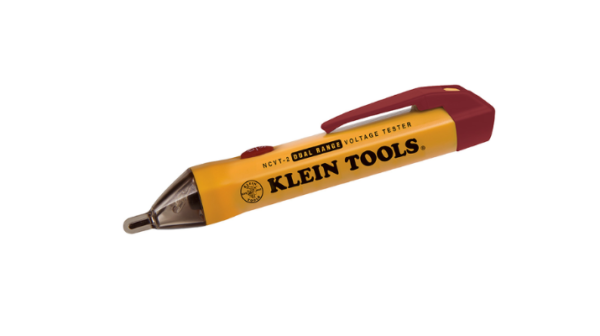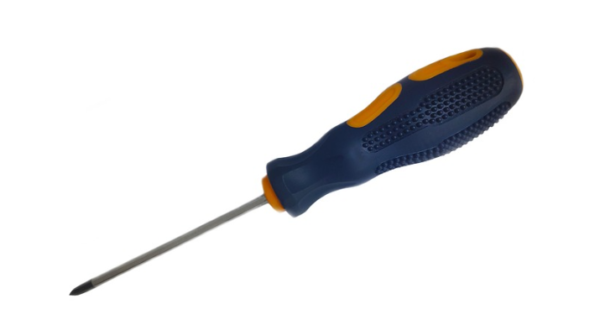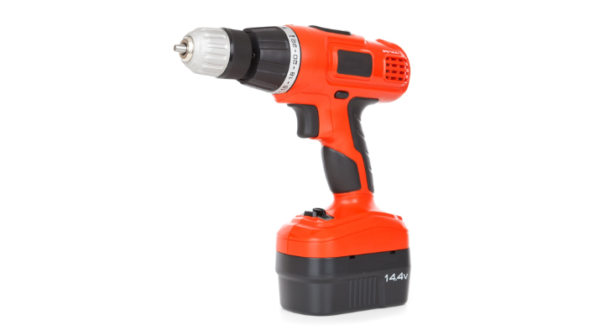 For any electrician, having the right tools in their toolbox is essential for safety, efficiency, and effectiveness. The right tools not only make the job easier but also ensure that work is completed to the highest standards. Whether you’re a professional electrician or a DIY enthusiast in the United States, equipping yourself with the right electrical tools can make a significant difference. In this guide, we’ll explore the top 10 must-have electrical tools every electrician needs in their toolbox, highlighting their benefits, uses, pros and cons, and key features.
For any electrician, having the right tools in their toolbox is essential for safety, efficiency, and effectiveness. The right tools not only make the job easier but also ensure that work is completed to the highest standards. Whether you’re a professional electrician or a DIY enthusiast in the United States, equipping yourself with the right electrical tools can make a significant difference. In this guide, we’ll explore the top 10 must-have electrical tools every electrician needs in their toolbox, highlighting their benefits, uses, pros and cons, and key features.
1. Multimeter

A multimeter is a fundamental tool in any electrician’s toolbox. It combines several measurement functions in one unit, primarily used to measure voltage, current, and resistance. Whether you’re diagnosing a circuit or ensuring that electrical connections are properly made, a multimeter is indispensable.
Benefits
- Versatility: Allows measurement of multiple electrical properties (voltage, current, resistance, etc.).
- Safety: Helps in identifying live wires, preventing accidental shocks.
- Troubleshooting: Essential for diagnosing electrical issues in circuits and appliances.
Uses
- Measuring AC/DC voltage in outlets, batteries, and circuits.
- Checking continuity in electrical connections and fuses.
- Testing resistance in various components.
Pros and Cons
Pros:
- Multifunctional and compact.
- Accurate measurements.
- Widely available in digital and analog forms.
Cons:
- Some models can be complex for beginners.
- Higher-end models can be expensive.
Key Features
- Display: Digital or analog display for reading measurements.
- Probes: Insulated leads for safe testing.
- Auto-ranging: Automatically selects the correct measurement range.
- Backlight: For easy reading in low-light conditions.
2. Wire Strippers
 are essential for safely removing the insulation from electrical wires, and preparing them for connections or repairs. This tool ensures that wires are stripped cleanly without damaging the wire itself.
are essential for safely removing the insulation from electrical wires, and preparing them for connections or repairs. This tool ensures that wires are stripped cleanly without damaging the wire itself.
Benefits
- Precision: Strips wire insulation without nicking the wire.
- Efficiency: Speeds up the process of preparing wires for connections.
- Safety: Reduces the risk of electric shock by cleanly exposing the conductor.
Uses
- Removing insulation from electrical wires before making connections.
- Cutting wires to the desired length.
- Preparing wires for crimping or soldering.
Pros and Cons
Pros:
- Easy to use with different wire sizes.
- Reduces the chance of damaging wires.
- Compact and portable.
Cons:
- Limited to specific wire gauges.
- Inexpensive models may not strip wires as cleanly.
Key Features
- Adjustable cutting blades: For different wire gauges.
- Spring-loaded handle: For ease of use.
- Built-in cutter: For cutting wires.
- Ergonomic grip: Reduces hand fatigue.
3. Voltage Tester

A voltage tester is a simple, yet critical tool that detects the presence of electrical voltage. It helps electricians verify whether a circuit is live before performing any work, ensuring safety on the job.
Benefits
- Safety: Ensures circuits are de-energized before work begins.
- Convenience: Provides a quick and easy way to check for live wires.
- Versatility: Useful for a variety of electrical work, from home repairs to professional jobs.
Uses
- Checking outlets and switches for voltage.
- Verifying that a circuit is de-energized before starting repairs.
- Testing light sockets and breaker panels.
Pros and Cons
Pros:
- Simple to use.
- Compact and portable.
- Inexpensive and widely available.
Cons:
- Some models may not be accurate with low voltages.
- Non-contact testers may give false positives.
Key Features
- Non-contact detection: Safely detects voltage without direct contact.
- Indicator light/sound: Alerts when voltage is present.
- Pocket clip: For easy carrying.
- Dual-range testing: Allows for testing of both low and high voltages.
4. Pliers (Lineman’s Pliers)

Lineman’s pliers are heavy-duty pliers designed for gripping, twisting, bending, and cutting wire and cable. These pliers are a staple in every electrician’s toolbox due to their durability and versatility.
Benefits
- Durability: Made of strong, heat-treated steel for long-lasting use.
- Versatility: Can be used for cutting, twisting wires, and gripping objects.
- Strength: Provides a firm grip for manipulating heavy-duty wires and cables.
Uses
- Cutting and stripping electrical wires.
- Twisting wires together for connections.
- Gripping and pulling cables through conduits.
Pros and Cons
Pros:
- Strong and durable.
- Multifunctional (cutting, twisting, gripping).
- Comfortable grip handles.
Cons:
- Can be heavy and bulky.
- Not suitable for fine, delicate work.
Key Features
- High-leverage design: Increases cutting power.
- Insulated handles: For added safety against electric shock.
- Serrated jaws: Provide a strong grip on wires.
- Built-in crimper: Some models include a crimping feature for connectors.
5. Screwdrivers (Insulated)

Insulated screwdrivers are essential for safely working on electrical systems. These screwdrivers are designed with non-conductive materials to prevent accidental electric shock.
Benefits
- Safety: Protects electricians from electrical shock while working on live circuits.
- Precision: Available in various sizes for different screws.
- Durability: Made to withstand high voltage environments.
Uses
- Installing and removing screws in electrical components.
- Tightening connections in outlets, switches, and breaker panels.
- Working safely around live electrical circuits.
Pros and Cons
Pros:
- Insulated for protection against electric shock.
- Available in multiple sizes and types.
- Durable and long-lasting.
Cons:
- Insulated models can be more expensive than standard screwdrivers.
- Limited to electrical work.
Key Features
- Insulated handle: Rated for up to 1,000 volts.
- Magnetic tips: Helps in holding screws.
- Variety of types: Phillips, flathead, Torx, etc.
- Ergonomic handle: Reduces hand fatigue during extended use.
6. Circuit Finder

A circuit finder is a tool used to locate and identify electrical circuits in walls, breaker panels, and outlets. It simplifies the process of tracing circuits, which is particularly useful in complex electrical systems.
Benefits
- Efficiency: Quickly identifies circuits without trial and error.
- Safety: Reduces the risk of working on the wrong circuit.
- Convenience: Easy to use in both residential and commercial settings.
Uses
- Identifying circuits in breaker panels.
- Tracing wires in walls and outlets.
- Labeling circuits for future reference.
Pros and Cons
Pros:
- Accurate and reliable.
- Saves time when working on large electrical systems.
- Portable and easy to use.
Cons:
- Can be expensive.
- Some models may require practice to use effectively.
Key Features
- Transmitter and receiver: Work together to locate circuits.
- Digital display: Shows circuit information.
- Auto power-off: Conserves battery life.
- Adjustable sensitivity: For precise detection.
7. Fish Tape

Fish tape is a tool used by electricians to route new wiring through walls, conduits, and other spaces. It’s essential for running wires in existing structures where direct access isn’t possible.
Benefits
- Flexibility: Easily navigates through tight spaces and around obstacles.
- Efficiency: Speeds up the process of pulling wires through conduits.
- Durability: Made from strong materials to withstand pulling forces.
Uses
- Pulling wires through conduit or behind walls.
- Routing cables in hard-to-reach places.
- Installing new wiring in existing buildings.
Pros and Cons
Pros:
- Reusable and durable.
- Easy to use with practice.
- Available in various lengths.
Cons:
- Can be tricky to use in complex routes.
- Metal fish tape can conduct electricity, posing a risk if not used carefully.
Key Features
- Length options: Typically available in 25, 50, or 100 feet.
- Material: Made from steel, fiberglass, or nylon.
- Leader end: Guides the tape through tight spaces.
- Reel: For easy storage and transport.
8. Electrical Tape

Electrical tape is an adhesive tape used to insulate electrical wires and other materials that conduct electricity. It’s an essential tool for protecting and insulating electrical connections.
Benefits
- Safety: Prevents electrical shorts and protects against electric shock.
- Versatility: Can be used for various electrical repairs and projects.
- Durability: Resistant to moisture, heat, and corrosion.
Uses
- Insulating electrical wires and connections.
- Bundling wires together.
- Marking cables for identification.
Pros and Cons
Pros:
- Easy to apply and remove.
- Provides a strong, insulating barrier.
- Inexpensive and widely available.
Cons:
- May degrade over time if exposed to extreme conditions.
- Not suitable for high-voltage insulation alone.
Key Features
- Material: Typically made from vinyl or rubber.
- Adhesive strength: Ensures it stays in place.
- Color options: Available in various colors for identification.
- Temperature resistance: Handles high and low temperatures effectively.
9. Electric Drill

An electric drill is a versatile and powerful tool that every electrician needs in their toolbox. It is essential for drilling holes in various materials, including wood, metal, plastic, and even concrete. Whether you’re installing electrical panels, running wires through walls, or mounting fixtures, a reliable electric drill is indispensable.
Benefits
- Versatility: Electric drills are incredibly versatile, capable of performing multiple tasks such as drilling, driving screws, and even sanding or polishing with the right attachments.
- Power and Precision: Modern electric drills offer variable speed settings and torque control, allowing you to adjust the power and precision for different materials and tasks.
- Time-Saving: With an electric drill, you can complete tasks much faster than with manual tools, increasing your overall productivity.
- Portability: Cordless drills, in particular, provide portability and convenience, allowing you to work in various locations without being tethered to a power outlet.
Uses
- Drilling Holes: The primary function of an electric drill is to create holes for installing screws, anchors, or other fasteners in different materials.
- Driving Screws: With the appropriate bit, electric drills can also drive screws into surfaces, making it easier to assemble electrical fixtures or components.
- Mixing: Some electricians use electric drills with paddle attachments to mix materials like paint or adhesives.
- Surface Preparation: With wire brushes or sanding attachments, drills can be used to clean or prepare surfaces before installation.
Pros and Cons
Pros:
- Efficiency: Drills significantly speed up the process of installing electrical components.
- Adjustability: Variable speed and torque settings allow for greater control over drilling and screw-driving tasks.
- Cordless Convenience: Many drills are battery-powered, offering mobility and ease of use in areas without easy access to power outlets.
Cons:
- Battery Life: Cordless drills rely on battery power, which can run out during prolonged use, requiring recharging or battery replacement.
- Weight: Some heavy-duty drills can be relatively heavy, leading to hand fatigue during extended use.
- Maintenance: Regular maintenance is required to keep drills in good working condition, such as charging batteries, replacing worn-out bits, and lubricating moving parts.
Key Features
- Variable Speed Control: Allows you to adjust the speed of the drill to suit different tasks and materials.
- Torque Settings: Helps in controlling the force applied, preventing overdriving screws or damaging materials.
- Ergonomic Design: Modern drills often feature ergonomic handles and lightweight designs to reduce user fatigue.
- Interchangeable Bits: Most electric drills are compatible with a wide range of bits and attachments, making them suitable for various tasks.
- Battery Life Indicator: Cordless models often include a battery life indicator to alert you when the battery needs recharging.
10. Circuit Tester

A circuit tester is a fundamental tool for checking the presence of voltage in electrical circuits. It’s crucial to ensure that circuits are de-energized before working on them and for diagnosing electrical faults.
Benefits
- Safety Assurance: Helps confirm that a circuit is not live before starting work, significantly reducing the risk of electrical shock.
- Fault Detection: Useful for identifying electrical problems, such as a broken circuit or faulty outlet.
- Simplicity: Easy to use, making it an essential tool for both professional electricians and DIY enthusiasts.
Uses
- Voltage Testing: Checks whether a circuit is live or de-energized.
- Continuity Testing: Assesses if a circuit is complete or if there are any breaks.
- Ground Testing: Ensures that the ground connection is functioning correctly.
Pros and Cons
Pros:
- Quick Testing: Provides immediate feedback on the status of an electrical circuit.
- Portable and Lightweight: Easy to carry and use in various locations.
- Affordable: Generally cost-effective, making it accessible for most users.
Cons:
- Limited Functionality: Basic models may only test for the presence of voltage and may not provide detailed diagnostics.
- Accuracy Variability: The accuracy of circuit testers can vary between models, with more advanced testers offering better precision.
Key Features
- Voltage Indicator: Shows the presence of voltage with visual or audible signals.
- Test Probes: Allows for easy connection to various points in a circuit.
- Built-in Light: Some models feature an LED light that indicates voltage presence.
- Durable Design: Made to withstand frequent use in various work environments.
Conclusion
Equipping yourself with the right tools is essential for any electrician, whether you’re a seasoned professional or just starting. The top 10 must-have electrical tools outlined in this article—ranging from multimeters to circuit testers—are fundamental for ensuring safety, efficiency, and precision in your electrical work. Each tool serves a unique purpose, providing crucial functionality that contributes to the overall quality of your work.